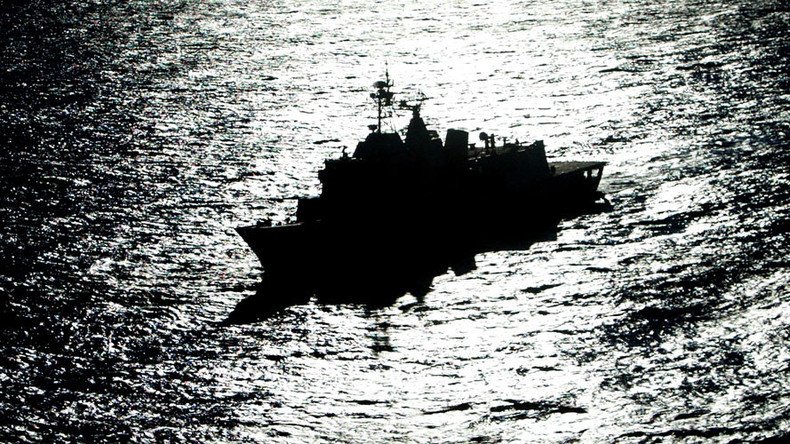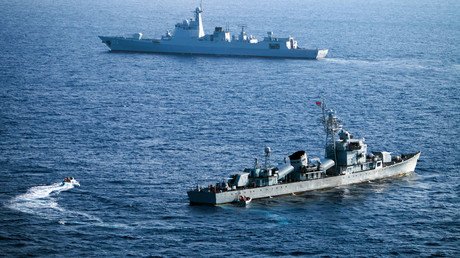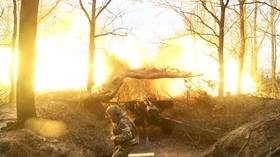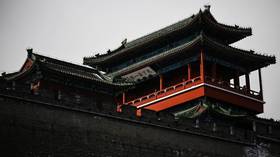Is war inevitable in the South China Sea?

Since the recent ruling by The Hague in favor of the Philippines and against China over the South China Sea, Southeast Asia has been engulfed on how to respond. They dithered. They haggled. They were plunged into despair.
It was a graphic demonstration of how “win-win” business is done in Asia. At least in theory.
In the end, at a summit in Vientiane, Laos, the 10-nation Association of Southeast Asian Nations (ASEAN) and China finally settled for that household mantra - “defusing tensions”.
They agreed to stop sending people to currently uninhabited “islands, reefs, shoals, cays, and other features” after ASEAN declared itself worried about land reclamation and “escalations of activities in the area”.
And all this without even naming China - or referring to the ruling in The Hague.
China and ASEAN also pledged to respect freedom of navigation in the South China Sea (which Washington insists is in danger); solve territorial disputes peacefully, through negotiations (that happens to be the official Chinese position), also taking into consideration the UN Convention on the Law of the Sea (UNCLOS); and work hard to come up with a Code of Conduct in the South China Sea (that’s been going on for years; optimistically, a binding text will be ready by the first half of 2017).
So, problem solved? Not really. At first, it was Deadlock City. Things only started moving when the Philippines desisted to mention The Hague in the final statement; Cambodia – allied with China – had prevented it from the start.
And that’s the heart of the matter when it comes to ASEAN negotiating with China. It’s a Sisyphean task to reach consensus among the 10 members – even as ASEAN spins its role as the perfect negotiation conduit. China for its part prefers bilaterals – and has applied Divide and Rule to get what it wants, seducing mostly Laos and Cambodia as allies.
That threat by a peer competitor
The strategic geopolitical centrality of the South China Sea is well known: A naval crossroads of roughly $5 trillion in annual trade; transit sea lanes to roughly half of global daily merchant shipping, a third of global oil trade and two-thirds of all liquid natural gas (LNG) trade.
It’s also the key hub of China’s global supply chain. The South China Sea protects China’s access to the India Ocean, which happens to be Beijing’s crucial energy lifeline. Woody Island in the Paracels, southeast of Hainan island, also happens to be a key bridgehead in One Belt, One Road (OBOR) – the New Silk Roads. The South China Sea is strictly linked to the Maritime Silk Road.
The arbitration panel in The Hague (composed of four Europeans, one American of Ghanaian descent and, significantly, no Asians) issued a ruling that is non-binding; moreover, it was not exactly neutral, as China, one the conflicting parties, simply refused to take part.
Beyond these expressions of mutual ASEAN-China understanding, hardcore action will keep everyone’s juices flowing. The Pentagon, predictably, won’t refrain from its FON (Freedom of Navigation) program, which has recently featured several B-52 overflights in the South China Sea along with the usual US Navy patrols.
But now Beijing is counter punching in style – showing off one of its H-6K long-range nuclear-capable bombers overflying Scarborough Shoal, near the Philippines. That only increased Pentagon paranoia, because the real game in the South China Sea revolves to a large extent over China’s aerial and underwater military strategy.
To understand the progression, we need to go back to the early 1980s, when the Little Helmsman Deng Xiaoping set up China’s first Special Economic Zone (SEZ) in Shenzhen. From the start, the whole Chinese miracle always depended upon China’s eastern seaboard’s fabulous capacity to engage in global trade. More than half of China’s GDP depends on global trade.
But, strategically, China has no direct access to the open seas. Geophysics is implacable: there are islands all around. And geopolitics followed; many of these are and can become a problem.
Wu Shicun, the president of China’s National Institute for South China Sea Studies, has been constant over the years; all of Beijing’s actions boil down to securing strategic access to the opens seas. This may be construed in the West as aiming for a “Chinese lake”. But it’s in fact about securing its own naval backyard. And that implies, predictably, deep suspicion about what the US Navy may come up with. The Defense Ministry loses sleep about it 24/7.
For Beijing, it’s crystal clear; the eastern seaboard must be protected at all costs – because they are the entry and exit point of China’s global supply chains. Yet as Beijing improves its military sophistication, the hegemon – or exceptionalist – machine gets itchier and itchier. Because the whole ingrained exceptionalist worldview can only conceive it as a “threat” by a peer competitor.
The larger-than-life “access” drama
From Exceptionalistan’s point of view, it’s all about the myth of “access”. The US must have full, unrestricted “access” to the seven seas, the base of its Empire of Bases, post-Rule Britannia system: the “indispensable nation” ruling the waves.
But now Beijing has reached a new threshold. It’s already in the position to successfully defend the strategic southern island of Hainan. The Yulin naval base in Hainan is the site of China’s expanded submarine fleet, which not only features stalwarts such as the 094A Jin-class submarine, but the capability to deliver China’s new generation ICBM, the JL-3, with an estimated range of 12,000km.
Closed Off: China to hold S. China Sea drills, warns against ‘freedom of navigation’ patrols https://t.co/iLVBWsXDKhpic.twitter.com/vzFM8Brvno
— RT (@RT_com) July 18, 2016
Translation: China now can not only protect, but also project power, aiming ultimately at unrestricted access to the Pacific.
The US counter punch to all this is “Anti-Access”, or A2, plus Area Denial, which in Pentagonese turns out as A2/AD. Yet China has evolved very sophisticated A2/AD tactics, which include cyber warfare; submarines equipped with cruise missiles; and most of all anti-ship ballistic missiles such as the Dongfeng 21-D, an absolute nightmare for those sitting duck billion-dollar US aircraft carriers.
A program called Pacific Vision, funded by the Pentagon’s Office of Net Assessments, eventually came up with the Air-Sea Battle concept. Virtually everything about Air-Sea Battle is classified. As the concept was being elaborated, China has mastered the art of very long range ballistic missiles – a lethal threat to the Empire of Bases, fixed and/or floating.
What is known is that the core Air-Sea Battle concept, known in Orwellian Pentagonese as “NIA/D3”,“networked, integrated forces capable of attack-in-depth to disrupt, destroy and defeat adversary forces”. To break through the fog, this is how the Pentagon would trample over Chinese A2/AD. The Pentagon wants to be able to attack all sorts of Chinese command and control centers in a swarm of “surgical operations”. And all this without ever mentioning the word “China”.
So these are the stakes. The indispensable nation’s military hegemony over the whole South China Sea must always be undisputed. Always. But already it is not. China is positioning itself as a cunning, asymmetrical aspirant to “peer competitor”. For the moment Beijing ranks second in the Pentagon’s list of “existential threats” to the US. Were not for Russia’s formidable nuclear power, China would already be number one.
At the same time China does not need to launch any military offensive against an ASEAN member; it’s bad for business. The environment after The Hague’s ruling – as the Laos summit proved – points toward long-term diplomatic solutions. But make no mistake; at some point in the future, there will be a serious confrontation between the US and China over “access" to the South China Sea.
The statements, views and opinions expressed in this column are solely those of the author and do not necessarily represent those of RT.















